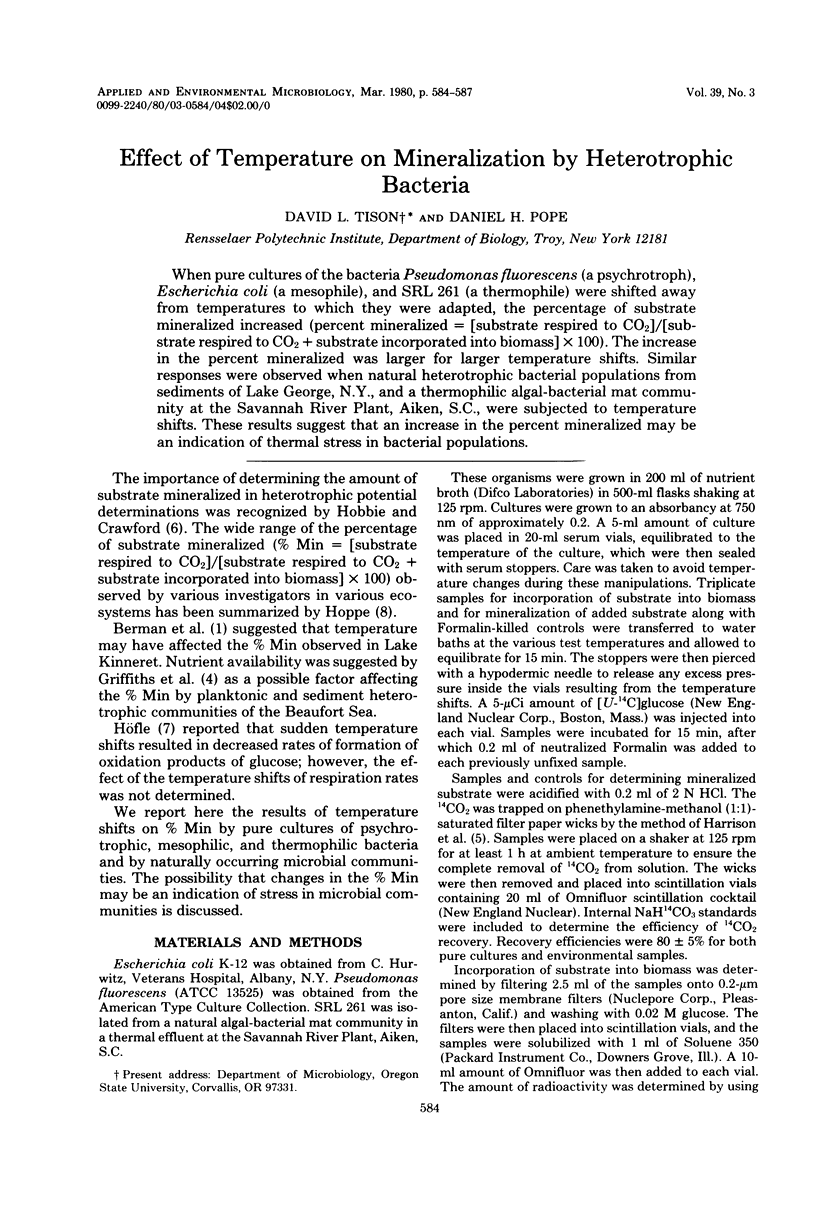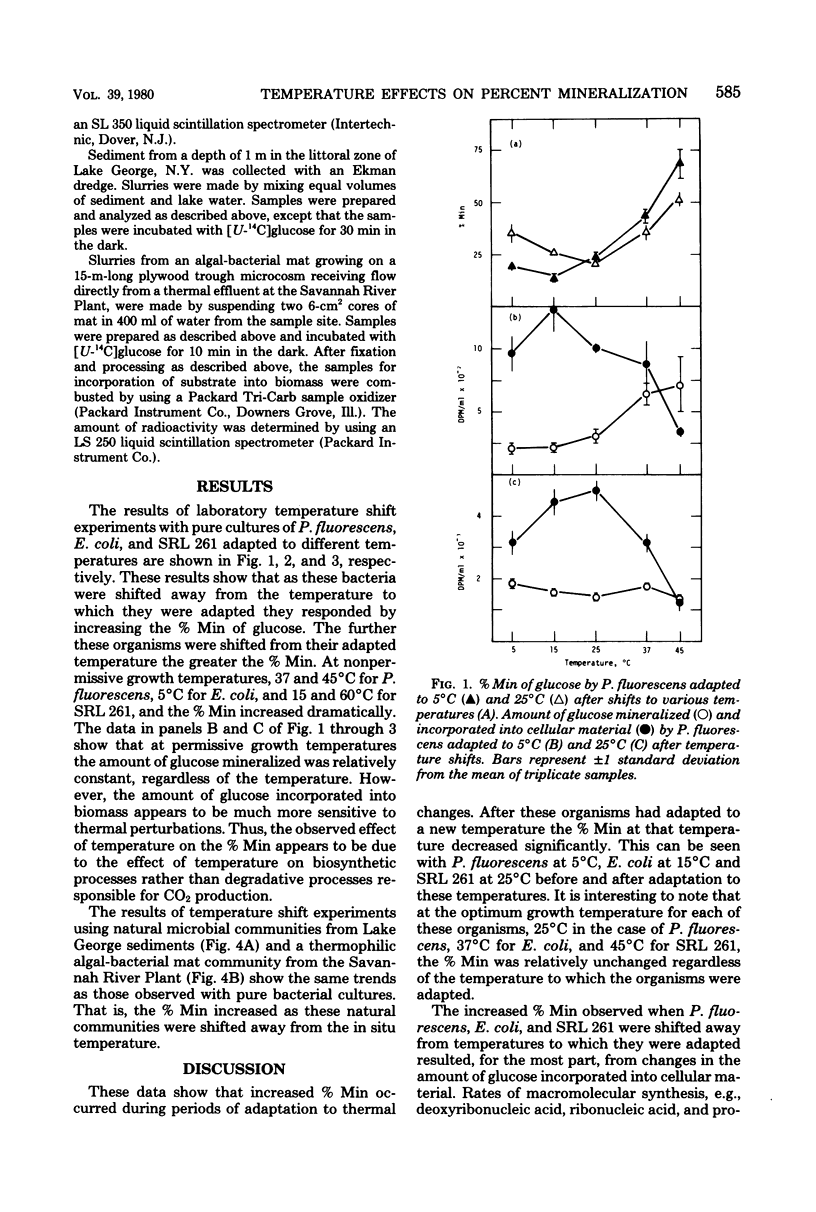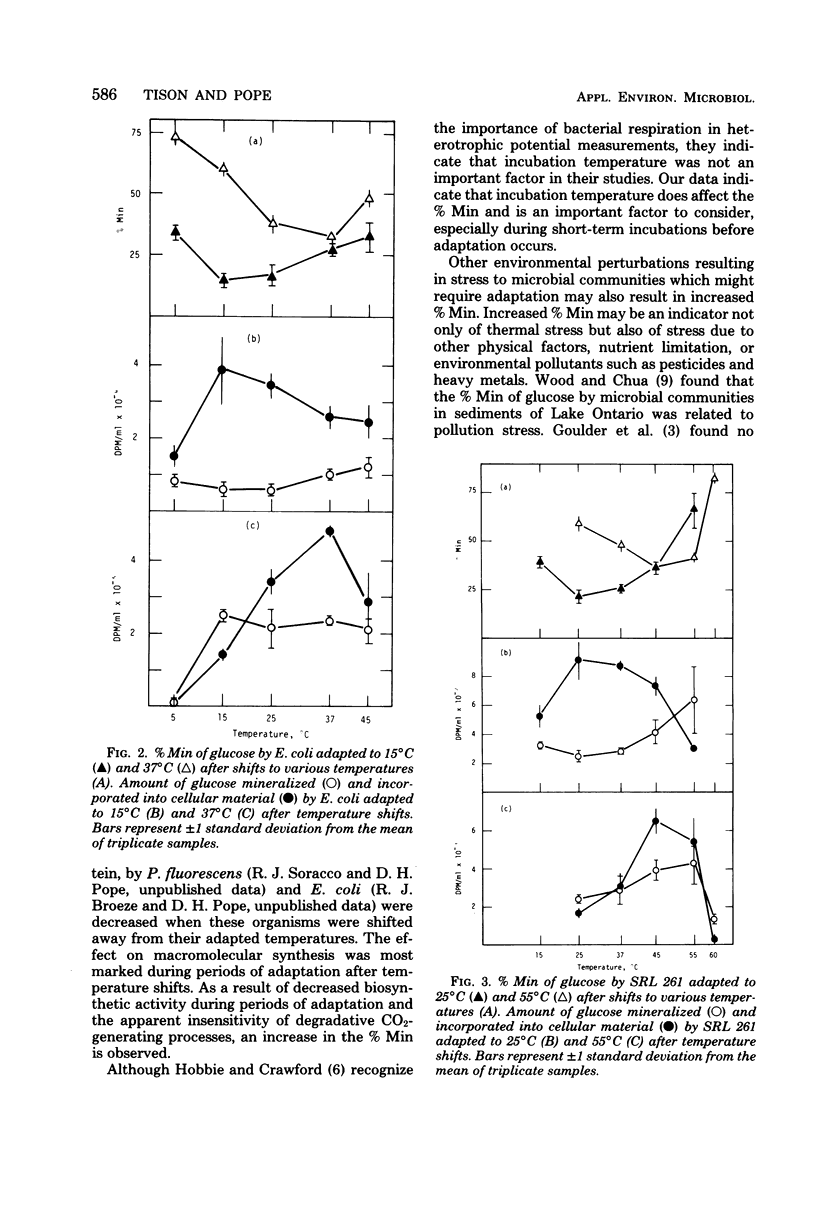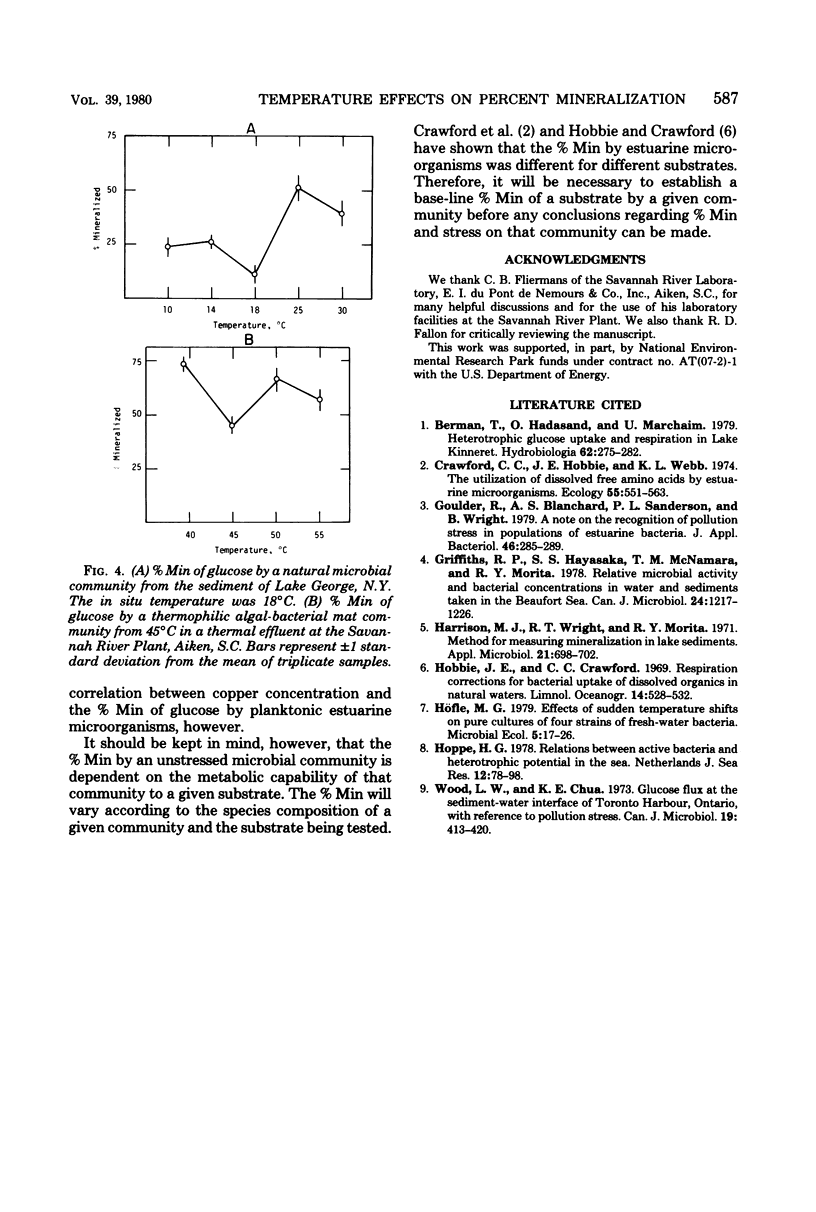Abstract
When pure cultures of the bacteria Pseudomonas fluorescens (a psychrotroph), Escherichia coli (a mesophile), and SRL 261 (a thermophile) were shifted away from temperatures to which they were adapted, the percentage of substrate mineralized increased (percent mineralized = [substrate respired to CO2]/substrate respired to CO2 + substrate incorporated into biomass] X 100). The increase in the percent mineralized was larger for larger temperature shifts. Similar responses were observed when natural heterotrophic bacterial populations from sediments of Lake George, N.Y., and a thermophilic algal-bacterial mat community at the Savannah River Plant, Aiken, S.C., were subjected to temperature shifts. These results suggest that an increase in the percent mineralized may be an indication of thermal stress in bacterial populations.
Full text
PDF



Selected References
These references are in PubMed. This may not be the complete list of references from this article.
- Goulder R., Blanchard A. S., Sanderson P. L., Wright B. A note on the recognition of pollution stress in populations of estuarine bacteria. J Appl Bacteriol. 1979 Apr;46(2):285–289. doi: 10.1111/j.1365-2672.1979.tb00822.x. [DOI] [PubMed] [Google Scholar]
- Griffiths R. P., Hayasaka S. S., McNamara T. M., Morita R. Y. Relative microbial activity and bacterial concentrations in water and sediment samples taken in the Beaufort Sea. Can J Microbiol. 1978 Oct;24(10):1217–1226. doi: 10.1139/m78-196. [DOI] [PubMed] [Google Scholar]
- Harrison M. J., Wright R. T., Morita R. Y. Method for measuring mineralization in lake sediments. Appl Microbiol. 1971 Apr;21(4):698–702. doi: 10.1128/am.21.4.698-702.1971. [DOI] [PMC free article] [PubMed] [Google Scholar]
- Wood L. W., Chua K. E. Glucose flux at the sediment-water interface of Toronto Harbour, Lake Ontario, with reference to pollution stress. Can J Microbiol. 1973 Apr;19(4):413–420. doi: 10.1139/m73-069. [DOI] [PubMed] [Google Scholar]


